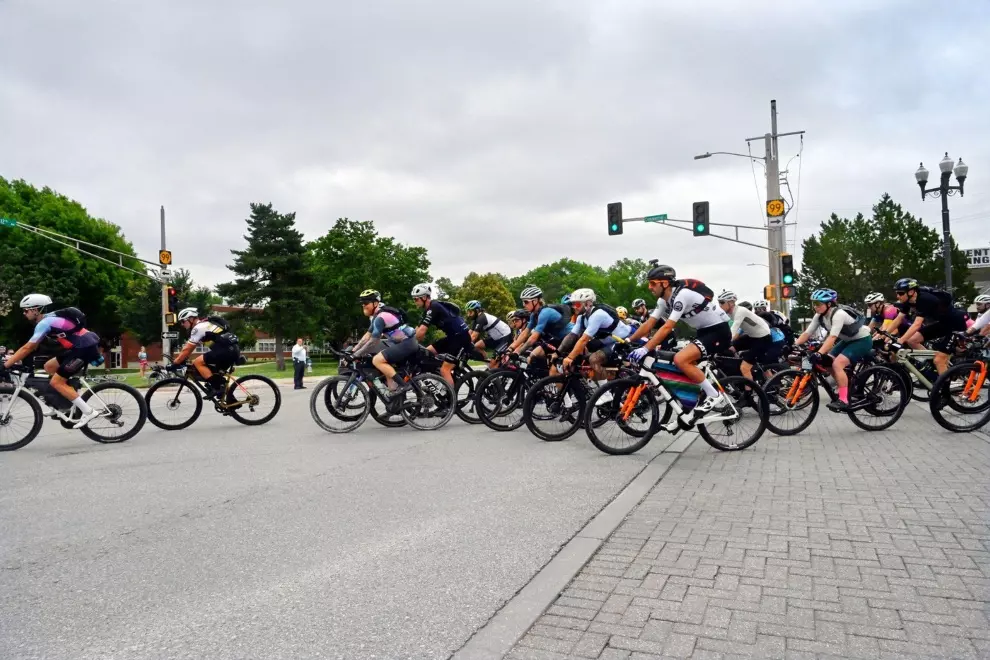There are a few questions you can ask yourself when considering an appropriate bikepacking meal or snack.
- Is it calorie dense and nutritional?
- Is it lightweight?
- Is it easy to prepare?
- Will it spoil?
If you’re only out for an overnighter or the weekend, nutritional content might not matter too much. But if you’re going longer than a few days, good food becomes an important element of a successful trip. In the planning stage of your trip, you might also consider a few more things before buying food.

Cooking
Are you carrying a stove? It can often be easier not to, and it’s entirely possible to eat comfortably without heating your food up. The joy of being on a bike means you may well pass shops, cafes or restaurants frequently with access to hot food. You might enjoy a hot drink at your camp spot, though, so carrying a stove can be a personal preference.
Storing your bikepacking food
Storage on a bike can be limited. If you’re bikepacking, you’re also hindered by the shapes of your bags. Opting for soft food bags such as reusable sandwich bags (heavy-duty zip seals often last longer than freezer bags) means you can stuff them into your various sized bags. Consider the ‘squishability’ of foods you purchase.
Breakfast
Porridge is the failsafe option regardless of dietary requirements. Since making your own is healthier than ready-made porridge pots, make up a freezer bag with the right number of portions plus powdered milk (whether cow’s, soy or coconut) and a few extras. If you can get hold of a lightweight plastic jar, you can store your porridge bag and make an overnight-oats style breakfast in said jar. Add water the night before and hey presto, you have nothing to do but eat in the morning.

Spice up your porridge:
- Dried fruit
- Cinnamon
- Sliced apple
- Chocolate chips
- Coconut flakes
- Crushed nuts
- Seeds: pumpkin, sesame, sunflower, chia, flax
- Sweetener: sugar, honey, agave or maple syrup
- A classic: salt
Other breakfast options:
- Tortilla wrap, banana and peanut butter
- Flapjack: prepare beforehand and fill with lots of healthy goodies, use agave or maple syrup instead of honey for the vegans, and crumble it instead of slicing so it can be stuffed into a food bag.
- Breakfast bars: simple and easy but not always ideal over long periods of time as they can be expensive and high in sugar.
- Dehydrated breakfast meal: some brands offer vegan dehydrated breakfasts, which are great for a bit of luxury. They’re expensive but will be packed with calories, protein, salt, all the good stuff. They can also be made in the packet to avoid washing up – win, win!
Lunch
If you’re not passing by a cafe, ideally, your lunch should be quick and easy to prepare.
-
- Tortilla wrap with whatever you can find: hummus, avocado, cucumber, tomato, mushroom paté, peppers, beans or chickpeas.
- Replace tortilla with any other bready carb: bagels, sliced bread, pita, flatbread etc.
- Crackers and spread (mushroom pâté, hummus, avocado, etc.).
- Peppers stuffed with couscous (can be hydrated using cold water).

Dinner
Be creative with your dinner and pack with vegetables where you can. If you’re passing a shop, grab anything easy to prepare e.g. spinach or tomatoes to load up on goodness.
- If you don’t mind the cost, pre-packaged ready to eat meals are usually a complete source of fuel (sufficient in carbs, protein, fibre, sodium, etc.) and are easy and simple to make. There are plenty of vegan and vegetarian food options out there so choose your brand. It might also be useful to keep one as a backup.
- Easy to cook carbs such as couscous, noodles, quick rice and instant mash are firm favourites. Pasta and potatoes on the other hand can waste both water and gas.
- Pre-cooked lentils make a great addition to any vegan meal as a source of protein, essential for muscle recovery.
- If you’re vegetarian, any hard cheese is a great shelf-stable, transportable, high-protein, high-calorie addition to any meal. Though be wary of parmesan as it is often not vegetarian.
Tip: Make up a packet of salt, spices and herbs before you leave home to make any meal tasty.

Snacks
Vegetarian and vegan snacks are easy to come by with the best combination being dried fruits and nuts. Chocolate bars are great pick-me-ups and high-cocoa dark chocolate especially is a great vegan option (check the label). Vegan sweets are becoming easier to come by and can be great for the end of the day when you need to keep pedalling just a little bit longer.
Fuelling your body as a vegetarian or vegan on a cycling trip might feel daunting at first but with a little inspiration, you’ll soon figure it out. As long as you have plenty of food to stop you from going hungry, you’ll determine your favourite foods – whether that’s because of convenience or taste and with each trip, it becomes that bit easier. Happy cycling!




